![]()
he state-by-state summary below presents newly passed or pending legislative measures that touch on economic development, business climate and corporate project execution issues.

Gov. Bob Riley signed a new bill aimed at helping small businesses and their employees afford the cost of health insurance. The plan allows business owners with fewer than 25 employees to deduct 150 percent of the amount they pay for employee health insurance premiums from their state income taxes. The plan also allows employees of small businesses earning $50,000 or less annually to deduct 150 percent of what they pay for health insurance from state income taxes.
The Alternative and Renewable Energy Act of 200, among other measures, provides tax credits and abatements for various energy-related expenditures. A new law creates the Shortline Railroad Infrastructure Rehabilitation Fund, which allows the DOT to make grants and no-cost loans for rehab of Class III shortline railroads in the state.

Gov. Sarah Palin signed legislation in August to award an Alaska Gasline Inducement Act license allowing TransCanada Alaska to start developing a 1,715-mile (2,759-km.) natural gas pipeline from a treatment plant at Prudhoe Bay to the Alberta Hub in Canada.
In June, Gov. Palin signed a bill decreasing the fee for a business license. The bill reduces the fee from $100 to $50 effective with the sale of 2010 licenses beginning Oct. 1, 2009.

Gov. Janet Napolitano signed a bill requiring railroad companies to provide the Arizona DOT and affected communities notice and an opportunity to hold public hearings about plans to build a new route or site before railroad companies invoke eminent domain powers. The bill does not give the state power to prevent a railroad company from building a new route or site.
At the close of the longest legislative session in 16 years, Gov. Napolitano signed a $9.9-billion budget that included several measures designed to close a FY 2009 $2-billion deficit. There were no tax increases, but there will be increases in the amount of fees and fines charged by state agencies, and the

50th state commemorative quarter, for the State of Hawaii. A new quarter for Puerto Rico will be issued in 2009.
Arizona Association for Economic Development (AAED) wrote in its August summary that “there is a growing consensus that taxes may be raised to deal with the FY 2010 budget.” Among budget cuts was $18.3 million from the State Aviation Fund, funded through on-airport user fees, and $10.3 million from the Dept. of Commerce’s Job Training Fund. “The only provision of the Arizona Jobs Creation Package that survived is the Arizona Research & Development tax credit,” wrote the AAED. The credit will increase from 20 percent to 24 percent over a two-year period for qualifying expenses below $2.5 million. For qualified expenses above $2.5 million, the credit will increase from $500,000 plus 11 percent to $600,000 plus 15 percent. “This modification matches the Arizona R&D tax credit to the California R&D tax credit and enhances Arizona’s competitive position,” said AAED.
The budget included $1 billion to support the Stimulus Plan for Economic and Educational Development, which allows the state’s three universities, plus the Phoenix Biomedical Campus and Arizona State University’s Polytechnic campus, to bond for construction and maintenance work performed on these campuses. Finally, the Transportation Infrastructure Moving Arizona’s Economy (T.I.M.E.) initiative has collected the necessary number of signatures to appear on the November ballot. It allows for a 1-cent statewide sales tax that would provide a transportation funding stream of $46 billion over 30 years, effective in January 2010.

Gov. Mike Beebe called a special session in the spring to pass a natural gas severance tax, stating that his proposed legislation was created “not to discourage investment but for expansion of our state’s economy,” because 95 percent will go toward transportation improvements. As a result of the law he signed on April 3, beginning January 1, 2009, the tax shall be 1.5 percent on new discovery gas for the first 24 months; 1.5 percent on high-cost gas for the first 36 months with a possible extension of 12 additional months; 1.25 percent on marginal gas; and 5 percent on all other natural gas. These new tax rates will be based on market value. Expected to generate $57 million in 2009 and $100 million by 2013, the severance tax increase is the first in 50 years.
The State General Assembly convenes its biennial session in January. Among the anticipated issues will be funding for a proposed Center for Dental Education at the University of Arkansas. This would be the state’s first dental school. The state currently has special agreements to send dental students to eight dental schools in seven states.
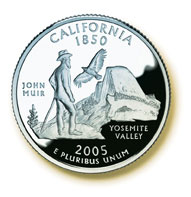
A report by Next10, an independent environmental research organization says California is home to nearly half of all green-tech investment in the U.S. In an effort to extend that momentum, Gov. Arnold Schwarzenegger signed a bill creating a Green Collar Jobs Council to develop a comprehensive approach to address California’s emerging work force needs associated with its burgeoning green economy. The new council will assist in developing and linking green collar job opportunities with work force development training opportunities.
Continuing its green theme, California also will build on the state’s solar power usage by continuing a property tax exclusion for projects that utilize solar panel energy and expanding the exclusion to builders-installed solar energy systems in new homes. The original property tax exclusion was passed by voters in 1980.
Another bill that was passed builds on California’s green economy by requiring the California Public Utilities Commission to grant incentives to eligible California-technology manufacturers. This bill also requires the California Energy Commission to give priority to California-based companies when granting awards.

Gov. Bill Ritter signed several bills affecting economic development in the state. They include a bill exempting 30,000 more businesses from the Business Personal Property Tax. The Colorado Bioscience Research Grant program was created, providing $26.5 million over five years to help grow the bioscience industry in the state.
Colorado’s corporate tax structure was simplified by establishing a “single sales factor” for multi-state corporations. It creates an incentive for companies that want to build their work force and increase their physical presence in Colorado, and it rewards companies currently investing in the people and infrastructure of Colorado.
New legislation also abolished the state’s “fly-away” sales tax on airplanes made in Colorado but sold to out-of-state owners.

Gov. Jodi M. Rell, citing the danger of higher costs to businesses, used her veto power in May to scuttle a bill that would have raised the state’s minimum wage from $7.65 to $8 beginning Jan. 1, 2009, and to $8.25 a year later. The state’s current wage is $1.80 above the federal minimum of $5.85 per hour. Rell said the bill was laudable, but its potential good was outweighed by its potential negative impact on the state’s economy.

Delaware’s General Assembly made significant changes to the Delaware Worker’s Compensation law, saving businesses an estimated 20 percent on premiums. Corporate income tax credits and gross receipt taxes are available to firms investing a minimum of $200,000 in a new or expanded facility and hire a minimum of five new employees.
The Asset Management Bill was passed, eliminating tax issues affecting asset management companies in Delaware.
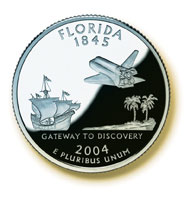
New legislation authorizes the Department of Environmental Protection to develop a cap-and-trade regulatory program, which gives businesses flexibility in meeting standards to reduce greenhouse gas emissions. It also creates a renewable fuel standard and a renewable portfolio standard that gives added weight to wind and solar energy over other forms of renewable energy. Building codes for newly constructed buildings and appliances for new commercial and residential buildings will also be more energy efficient.
New legislation also centralizes Florida’s energy and climate change programs and policies within the Florida Energy and Climate Commission to be established within the Executive Office of the Governor. The Commission will promote efficiency, cooperation and reduce duplication to support a comprehensive, long-term state energy policy. It also establishes a renewable fuel standard, requiring ethanol to make up 10 percent of Florida’s total fuel supply by 2010. In addition, the Public Service Commission will develop a renewable portfolio standard to increase the use of wind, solar and other renewable energy. Newly constructed buildings will be up to 50 percent more efficient by 2019 by improving existing building codes.
The Legislature also set funding for these programs:
• Funding for the state’s Economic Development Tool Kit at $21.7 million which includes Qualified Target Industry (QTI) Tax Refund Incentive, Qualified Defense Contractor (QDC) Tax Refund Incentive, and the High-Impact Performance Incentive. Rural infrastructure was funded at $4.7 million defense infrastructure at $10.6 million and Military Base Protection at $250,000. Total funding for space, defense, and rural infrastructure was $15.3 million.
• Funding for Enterprise Florida was reduced to $11.9 million.
• Funding for the Film & Entertainment incentive was set at $5 million.
• $26.4 million for the Quick Action Closing Fund. However, proviso language was inserted that allocated $5 million of this funding towards a Pasco County economic development project if Pasco contributes a 50 percent match from non-state sources. An additional $20 million in non-recurring general revenue was also made available.
• The state’s Quick Response Training Program was funded at $5 million.
• The Incumbent Worker Training Program was funded at $2 million.

The 2008 Entertainment Industry Investment Act, signed into law by Gov. Sonny Perdue, provides a 20 percent tax credit for qualified films, TV series, commercials, music videos and video game productions, an industry sector the state said had an economic impact of $413 million in 2007.
Productions are available for an additional 10 percent tax credit if they also include an animated Georgia promotional logo within the finished product. State officials said the act puts the state in the top five states in terms of incentives available to the industry.
Manufacturers now have some protection against a spike in state sales tax when there is a spike in energy costs. House Bill 272 states there will be not state sales tax on the portion of increase of certain itemized costs.
The Integrated Plant Theory bill defines and expands sales tax exemptions allow for all machinery and equipment necessary to the manufacturing process as well as all water-pollution eliminating machinery.

Bills making it easier for alternative energy development were approved during the 2008 session. Biofuel producers now have an easier time directly leasing public lands. The new law, signed by Gov. Linda Lingle, expands the definition of renewable energy producer to include growers and producers of organic materials used primarily for the production of biofuels. This allows energy producers to enter into direct negotiations to lease public lands where they may grow their crops or raise livestock, then transport the materials to a biofuel conversion facility located in an industrial or commercial zone. The bill also clarifies that the byproducts from the organic materials may be used for other beneficial purposes such as mulch, feed or feedstock, and still qualify for the directly negotiated leases.
Another bill allows the construction and operation of solar energy facilities on less productive agricultural lands.

The Legislature approved a bill allowing county commissioners to declare that all or a portion of the market value of investment in new plant and building facilities meeting tax incentive criteria be exempt from property taxation. The legislation will grant the board of county commissioners authority to offer property tax exemptions for a maximum of five years to a taxpayer who spends a minimum of $3 million for new manufacturing facilities in rural areas as defined by the United States Department of Agriculture Rural Development Business and Industry Loan program. The taxpayer must demonstrate significant economic benefits that will accrue to the county from such property development.

The legislature failed to pass the $25 billion “Illinois Works” infrastructure construction plan aimed at revitalizing the state’s roads, bridges and classrooms. The plan, which would be funded through expanded gambling and the leasing of the lottery, will likely be taken up again during the Legislature’s Veto Session set for November.
Gov. Rod R. Blagojevich signed legislation requiring electronics manufacturers to collect and recycle or reuse electronics products. At no charge to consumers, the law authorizes the use of a combination of incentives and mandates to reduce the ever-increasing amount of electronic waste – televisions, printers, computer monitors, computers, laptops, printers, fax machines and MP3 players – and their toxic substances, such as lead, cadmium, copper, flame retardants, and phosphorus, from being disposed in Illinois landfills. It also gives manufacturers flexibility in the strategies they use to meet their goals, such as partnering with retailers and local governments to sponsor collections. Manufacturers, recyclers, refurbishers and collectors must also register annually with the Illinois EPA. Effective January 1, 2012, landfills would be prohibited from knowingly accepting any of the covered electronic devices for disposal.
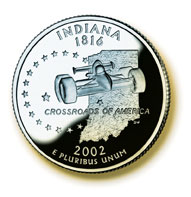
New property tax reform law provides sweeping tax relief, cutting homeowner property taxes by an average of 30 percent and placing caps on future tax growth beginning in 2010 to provide permanent protection for homeowners and business. The caps are fully in place, and the plan delivers $1.72 in tax cuts for each $1 of revenue raised by a one-cent sales tax increase.
A new tax credit designed to boost the state’s film and video industry became effective in July 2008. The Media Production Expenditure tax credit will provide individuals and companies with a tax credit of up to 15 percent on the amount spent in Indiana for qualified production expenditures. The total amount of tax credits approved by the state for any fiscal year may not exceed $5 million, but there is no cap per project.

Incentives for companies involved in renewable energy and efforts to lower property taxes will be among the economic development-related initiatives the Iowa Legislature expects to consider when it convenes in January 2009. The renewable energy effort by lawmakers follows the 2007 creation of $100 million Iowa Power Fund, aimed at boosting renewable fuel research and production and weaning Iowa from its dependence on foreign oil by 2025.

The Kansas Legislature passed new bonding authority for eligible large aviation projects, defined as a company engaged in the aviation manufacturing or service industry paying at least $300 million in annul gross wages, paying at least a $50,000 annual wage and that has invested at least $500 million in real and personal property in Kansas. An eligible aviation project is a research, development, engineering, or manufacturing project worth at least $500 million and employing up to 4,000 full-time employees. The Kansas Development Finance Authority would then issue bonds for a principal amount of up to $33 million for a single aviation project with $150 million being the total cap for all aviation projects using this tool.

The Kentucky Enterprise Fund program, formerly named the Kentucky Research and Development Voucher Fund, has been expanded to allow grants to companies of up to $30,000 for feasibility, $250,000 for concept development, $500,000 for post-initialization, and $750,000 for high-growth potential; waive requirement of partnering with a college or university where it is not practicable. The Kentucky Jobs Development Act has been amended to include an eligible company that engages in activities involving the performance of work by an individual pursuant to a license issued by the state if 75 percent of the services are provided to persons located outside the Commonwealth. A new measure will provide grants to encourage higher academic achievement in science, technology, engineering and mathematics. Gov. Steve Beshear in August signed an executive order directing the Transportation Cabinet to immediately develop and implement an emergency regulation authorizing the use of low-speed electric vehicles on Kentucky’s roadways. The order came three weeks before Integrity Automotive, LLC, announced it had chosen Simpson County as the location to construct a new $84-million facility that will be used to manufacture low-speed electric vehicles.
Kentucky launched in March a state program that administers $5 million in public funds for investment in promising renewable and alternative energy companies in the Commonwealth. The program, established legislatively under the name “Kentucky Alternative Fuel and Renewable Energy Fund Program,” was created by the state’s General Assembly under House Bill 1 during the 2007 Extraordinary Session.
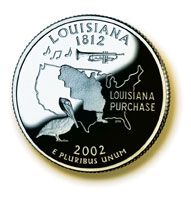
The Governor’s budget for fiscal year 2008-2009 includes a number of investments within Louisiana Economic Development to strengthen state competitiveness and business development efforts, including $3 million for the Louisiana Fast Start Program. Fast Start will enhance Louisiana’s business development efforts by delivering comprehensive workforce training services, from pre-employment recruitment and assessment that help companies “select the best,” to customized, job-specific training that delivers the skills a business needs. It also provides $400,000 for the Business Retention and Expansion Program, which will cultivate Louisiana’s existing businesses by aggressively pursuing business retention and expansion prospects identified via company consultations, company inquiries, and partner communications. The budget also includes $40.9 million for Rapid Response funds used for securing business development wins in order to create or retain jobs and $404 million in Mega Project Funds for immediate funding of all or a portion of economic development mega-projects. Mega-projects must: (1) create 500 new direct jobs; (2) provide a minimum $100M by the private sector or U.S. government in a new facility or expansion of existing facility; (3) provide a substantial return on investment as measured by projected tax revenues; and (4) not involve a state investment greater than 30 percent of the total cost of the project. Also, the budget provides $2 million for Project Specific Site Preparation and Evaluation. This investment will improve the state’s business development capacity by meeting the demands of site-selection consultants for site-specific information and proposals.
The legislature passed the LCTCS Workforce Training Rapid Response Fund (HB 1018) that appropriates $10 million annually to establish a standing training fund for high-demand, high-cost training programs at LCTCS, as determined by market demand and economic and employment projections. These dollars will supplement the higher cost of high-demand occupational training and jump-start the response of frontline LCTCS programs.

Part of Public Law 2007 provides support for green energy in Maine by transferring annually 35 percent of the Renewable Resource Fund to the Maine Technology Institute to support development of renewable energy resources. It also calls for the Dept. of Economic and Community Development, Office of Innovation, to work with the Univ. of Maine’s Student Innovation Center and other higher education entities to design a leadership and entrepreneurial development program.

The BRAC Community Enhancement Act authorizes the establishment of BRAC Revitalization and Incentive zones to target investment and fund infrastructure needs based on new development in areas targeted for redevelopment and revitalization. It authorizes local governments, the state of Maryland and private entities to enter into PILOT agreements for developments on military bases.
SB304/HB 373 codifies as State policy transit-oriented development (TOD). By clustering development around transit sites, TOD seeks to maximize the State’s investment in transit by promoting increased ridership and pedestrian and bicycle mobility, thereby reducing congestion, greenhouse gas emissions, pollution and sprawl.
The Job Creation Tax Credit (JCTC) is the state’s major effort to provide a tax incentive to businesses throughout the state for creating a significant number of higher paying jobs. This bill originally repealed the January 1, 2010, sunset provision in the JCTC, however it was amended to extend the sunset to 2014, rather than repeal it.
The Business & Economic Development – Biotechnology Investment Incentive Act provides for program and technical amendments to the Biotechnology Investment Incentive Tax Credit. It expands the definition of qualified companies, investors and investments; provides that an eligible company may in some circumstances be up to 12 years old (as opposed to 10); and caps the amount of the incentive for one company to no more than 15 percent of the total of the fund for any year. The bill also authorizes a recapture of the credit if the investor transfers its ownership interest in the company or the company leaves the state or ceases operation.

The legislature and Gov. Deval Patrick’s administration took several steps in the past year to improve Massachusetts’ business climate. These include creation of a 10-year, $1-billion Life Sciences Initiative that is designed to ensure the state’s ability to support life sciences innovations from idea to product. The governor signed into law a series of tax changes that makes the state tax system more fair and equitable for individuals and businesses. The law closes a series of corporate tax loopholes and reduces the business tax rate, aligning Massachusetts with its competitor states and leveling the playing field for smaller businesses by making sure multi-state corporations are required to pay their fair share. Another law will spur economic growth by cutting approval time from two to three years to six months on development projects.
Concerning physical infrastructure, the governor signed into law a $3-billion accelerated bridge program that fast-tracks the repair of 300 of the state’s most structurally deficient bridges, assuring the public safety and saving millions of dollars. In the area of telecom infrastructure, he signed into law a $40-million bond bill that will bring high speed internet access to underserved areas of the Commonwealth and communities with no access at all, spurring economic development and improving the quality of life. A 10-year, $2.19-billion Higher Education Bond Bill makes an historic capital investment in the Commonwealth’s public colleges and universities.
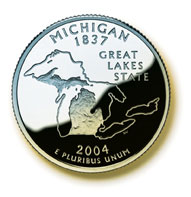
Governor Jennifer Granholm signed into law a package of bills that create new tools to attract new business investment and jobs in fast-growing, high-technology industries. The bills create “anchor zones” that provide incentives to companies to attract other growing companies. The first of two bills signed into law provides tax credits for anchor companies, those companies that attract or influence suppliers or customers to expand anywhere in Michigan.

The size of those anchor zone tax credits are based on the number of jobs created and the amount of personal income taxes generated by those jobs.
A second bill grants the anchor company a Michigan Business Tax credit incentive for up to 10 years for successfully encouraging a customer or supplier company to locate within a 10-mile (16-km.) radius of the anchor company’s facility. The company entering the anchor zone must invest at least $1 million and create more than 10 full-time jobs. It can be a Michigan company adding a new location in Michigan, a business relocating to the state, or one expanding operations in Michigan as a result of doing business with the anchor company. The new anchor zone incentives are directed at companies, suppliers, and customers active in high-growth, high-technology industries targeted in the governor’s 21st Century Jobs Fund initiative to diversify and strengthen Michigan’s economy, particularly in the area of alternative energy. Other areas of growth include advanced manufacturing and materials, information technology, medical devices, and life sciences.
The governor also signed into law legislation designed to grow the film industry in Michigan. Specifically, the new laws provide a 40-percent refundable or transferable tax credit for producing films in Michigan, with an added 2-percent rebate for films produced in core communities. The new laws also provide 25-percent tax credit for film and digital media infrastructure investments for such activities as building studios or purchasing equipment. Film and digital media production companies are now eligible to receive job creation tax credits issued by the Michigan Economic Growth Authority (MEGA) against MBT liability for the creation of jobs; loans from the Michigan Strategic Fund under the 21st Century Jobs Fund program for up to $15 million per qualifying film and digital media productions in Michigan; loans against film production tax incentives; and are eligible to participate in the capital access program established by the Michigan Strategic Fund under the 21st Century Jobs program.
Gov. Granholm also signed into law a package of bills reforming the state’s major business incentive to allow more flexibility in meeting interstate and international competition for business investment. Under the reforms, a company that is retaining or creating a minimum of 50 jobs can qualify for a MEGA Michigan Business Tax credit. The reforms also pave the way for small, high-tech businesses in “creative class” industries like architectural design to qualify for the incentives as well. The new law removes a requirement that a company prove it had received competing, lower-cost offers from other states or countries to be eligible for the incentives.

Among the measures passed in the 2008 legislative session was one enabling small towns to access the Public Facilities Authority’s high-investment bonding rating for wastewater, drinking water and storm water facilities. This will help lower the costs at the local level and help in offering a complete financial package for critical job-creating efforts. Another established an Office of Science and Technology at the Department of Employment and Economic Development to help small businesses and entrepreneurs access federal grant programs for technology development. A third created a High-Speed Broadband Task Force to identify areas in the state that lack infrastructure to support broadband service. The task force will also develop a comprehensive plan to achieve a statewide high-speed broadband goal.
Gov. Pawlenty’s Strategic Entrepreneurial Economic Development (SEED) initiative provides: $7.8 million for the Redevelopment Grant program, which provides assistance in redeveloping commercial, industrial and residential sites; $7 million for Greater Minnesota Business Development infrastructure; $9 million for Bioscience Business Development infrastructure; $28 million for infrastructure related to the Minnesota Steel plant; and funds for a variety of other projects around the state.

Bonding authority was provided for a number of the Mississippi Development Authority grant and loan programs. Legislation was passed extending the authority of the Mississippi Department of Employment Security. In addition, this legislation extended the repealer dates on three economic development programs. The Legislature also approved measures related to the new Toyota plant under construction near Blue Springs. Mississippi is one of the finalists under consideration by the federal government for the National Bio and Agro-Defense Facility. Special Legislation was passed under the Major Mississippi Economic Impact Authority to provide authority for Mississippi to respond quickly if Mississippi is chosen as the site.
In other action, the Legislature modified the Motion Picture Incentive Act to encourage production in Mississippi by allowing a greater rebate on in-state spending, and set program limits for minimum spend and maximum annual rebate to be paid.
The Mississippi New Markets Tax Credits legislation was modified to decrease the time over which credits are earned, and the full credit is now allowed toward insurance premium taxes as well as income.

Gov. Matt Blunt signed legislation that will benefit Missouri workers and employers by enhancing entrepreneurship and economic growth opportunities in Missouri. The legislation increases the annual cap on Gov. Blunt’s successful Quality Jobs Tax Credit Program from $40 million to $60 million. Companies qualify if they pay at least average county wages and provide health coverage to their employees. Since 2005, the Quality Jobs Act has helped create nearly 22,000 new jobs and retain 2,379 others.
The legislation also increases the amount of tax credits the Missouri Department of Economic Development may authorize for the Enhanced Enterprise Zone Program, from $14 million to $24 million, and creates greater openness and transparency in state government by requiring that every state agency make public the name of tax credit recipients and the amount of the tax credit.
The governor also signed legislation to protect innovative new technology that is reducing costs and creating more competitive choices for consumers from unnecessary regulation. The bill is the most extensive deregulation of voice over Internet protocol (VOIP) service in the nation. As VOIP and related technology is continuing to evolve and develop a market presence, this legislation will allow it to grow more effectively and efficiently.
Gov. Blunt also signed legislation that will safeguard Missouri jobs and reverse a Supreme Court decision that impacted the Second Injury Fund’s already depleting balance. House Bill 1883 clarifies payments from the Second Injury Fund end with the death of the injured worker. The Second Injury Fund and the workers’ compensation system are designed to adequately compensate workers who are injured on the job and whose future work abilities are compromised.

Montana’s legislature did not convene in 2008; the 61st Legislature will convene January 5, 2009. Governor Brian Schweitzer announced in February that nearly $95 million dollars has gone back to 235,460 Montana households in the form of the $400 homeowner property tax refund since the program began on August 27. More than 95 percent of the estimated eligible households benefited from the property tax refund.

Gov. Dave Heineman signed LB 895, the Nebraska Super Advantage, into law, which will help communities advance economic development and business recruitment efforts throughout the state. The bill modifies the state’s existing set of business incentives by adding a new layer of incentives to the five tiers that comprise the current Nebraska Advantage. The Nebraska Super Advantage is focused on attracting companies ready to create higher-paying jobs in the state. The new tier provides tax incentives to businesses creating new jobs paying at least 150 percent of the state average wage or 200 percent of the average wage in the county where the business is located, whichever is greatest. To qualify, companies will need to create 75 new jobs and make a $10 million capital investment, or create at least 50 new jobs and make a $100 million investment in capital. Qualifying businesses will be eligible to receive a 15-percent investment tax credit and a 10-percent wage credit, in addition to sales tax refunds on purchases associated with expansion and a 10-year exemption on personal property. The program will be administered by the Nebraska Department of Revenue.
LB 895 also updates parts of the original Nebraska Advantage legislation by allowing Internet Web portal companies to qualify for incentives. It also expands the Nebraska Rural Advantage to include companies located in any village or small town, regardless of county size and areas of extreme poverty in the Omaha area, and invests an additional $1 million in Rural Advantage funding, bringing the total available beginning in FY 2009-10 to $4 million.
Gov. Heineman also signed LB 888 into law, which lowers taxes for Nebraska businesses and is the first adjustment to the state’s corporate tax brackets since 1982. The bill provides tax relief that is aimed at small businesses by extending the lower tax bracket for corporate income tax filers. The bill adjusts the state’s corporate income tax by expanding the current $50,000 income cap to $100,000. Businesses will now pay a 5.58-percent tax on earnings of up to $100,000 rather than the $50,000 cap outlined in current state tax code. Earnings above $100,000 will still be taxed at 7.81 percent.

The state legislature did not meet in 2008. In January, Governor Jim Gibbons released the Phase 1 report prepared by the Renewable Energy Transmission Access Advisory Committee (RETAAC). The Governor created this advisory committee in May 2007 to identify potential development locations for renewable energy and assess existing and planned transmission access to these resources. He also charged the committee to make recommendations for additional transmission lines. Nevada currently spends over $6 billion dollars a year on imported energy including electricity, natural gas, and transportation fuel. The report identifies twelve wind zones, four solar zones, six geothermal zones, and four biomass zones for potential commercial development. Following an assessment of current transmission grid access, the committee also made recommendations for construction of transmission lines and collector systems that will enable access for renewable energy development in each of the identified Renewable Energy Zones. This will include expansion of the transmission line to connect Nevada’s northern and southern electric grids.

Gov. John Lynch signed into law the Coos County Tax Credit, an important new tool in the state’s efforts to attract jobs to the North Country. Under the new law, any business that creates a job paying at least 150 percent of minimum wage would be eligible for a $750 credit against its business taxes for each of the next five years, while a company that creates a job paying 200 percent of minimum wage would receive a $1,000 credit. Also, the cost of health benefits can be added to a wage to determine whether the newly created job qualifies for a tax credit and at what level. The Coos County Tax Credit will provide a significant incentive for businesses to create jobs in Coos County, helping overcome some of the unique barriers to job creation that the region faces, such as geography and cost. Businesses will be able to apply the tax credit to the Business Enterprise Tax, and any unused portion to the Business Profits Tax. The credit is structured to protect existing jobs. For example, a company in the southern tier cannot move jobs to Berlin and receive the credit. Also, an existing Coos County company cannot lay off their workforce, create a similar company and shift their workers.
The governor also signed legislation creating a specialized business court docket in the New Hampshire superior court. The new business court will be similar to other specialized courts in New Hampshire, such as the family court, where a superior court judge will handle the docket of all business and commercial disputes, allowing business disputes to be resolved quicker and adding efficiency to the judicial system.

Governor Jon Corzine signed legislation to pay down the state’s debt by $650 million, an action that marks another turning point in the management of the state’s finances and saves taxpayers $135 million in interest and debt service payments each of the next five years. “In past years, surplus funds generated by unexpected revenue growth have gone toward operation expenditures and avoided hard choices on budget reductions. Failure to make those reductions led to carry over gaps in succeeding years,” Governor Corzine said. “This payment on debt is in keeping with the administration’s goal to match recurring revenues with recurring expenses.”
The debt reduction bill (S2052) establishes the Long Term Obligation and Capital Expenditure Fund and makes an appropriation to pay down the state’s debt load. Funded primarily by the surplus from the Fiscal Year 2008 budget, the bill dedicates $650 million toward the repayment of long-term obligations.
This year’s budget also includes: $1.1 billion toward paying down the state’s pension obligation and $260 million from the surplus dedicated to replenishing the Unemployment Insurance Trust Fund. The latter will prevent a tax increase on New Jersey businesses and ensure the solvency of the fund for unemployed workers. The fund is set to automatically increase unemployment taxes on businesses if the balance falls below a predetermined level. Over the past 14 years, approximately $4.7 billion in revenues has been diverted from the fund to other purposes. That has led to a diminished balance.

Gov. Bill Richardson signed legislation in 2008 that will allow state and local governments to provide compensatory time for employees that work longer shifts, rather than cut into their budgets to pay overtime. He also signed the feed bill into law, providing operational funding for the 2008 legislative session. The Governor also signed bills that provide tax rebates for New Mexico taxpayers and tax credits for many New Mexico families. The Refundable Personal Income Tax Credit and Working Families Tax Credit Increase were the signature bills of the Governor’s CARE package, which he proposed to lawmakers during a special session to offer relief to New Mexico families hurt by high gas prices. SB 24, The Refundable Personal Income Tax Credit, is a $56 million dollar rebate to New Mexico taxpayers.

Gov. David Paterson signed legislation in April that expands the state’s film production tax credit program in an effort to compete more effectively with other states that have introduced such tax credits. In June, the governor and state legislators announced an agreement on legislation to improve transparency and strengthen regulation of group self-insurers through regular review of trust finances by independent actuaries, heightened penalties for misconduct and the establishment of procedures to ensure that underfunded trusts become fully funded. These new regulations address the current strain on the workers’ compensation system as a result of a handful of group self-insurers that have defaulted in recent years. The legislation also calls for the creation of a fund to ensure the payment of claims by defaulted trusts. This new fund will be drawn from the uninsured employers’ fund, and will alleviate some of the burden placed on other employers by these defaults. In addition, the legislation calls for the creation of a Task Force to recommend possible reforms for workers’ compensation group self-insured trusts. The Task Force will be comprised of representatives of various participants in the workers’ compensation arena.
The governor and legislators also agreed to reform the state’s Brownfield Cleanup Program to better target incentives for the cleanup and redevelopment of contaminated sites. The legislation will, in some cases, provide more than double the current tax incentives for site cleanup, up to 50 percent of cleanup costs; limit redevelopment credits for non-manufacturing projects to $35 million or three times the cost of site cleanup, whichever is less; limit redevelopment credits for manufacturing projects to $45 million or six times the cost of site remediation, whichever is less; and streamline administration of the Brownfield Opportunity Area Program.
In August, the governor signed legislation to expand the state’s net metering laws to facilitate more net metering of electricity generated by solar, wind and farm waste electric generating systems. The development of these technologies provides numerous environmental, economic and societal benefits by reducing New York’s use of fossil fuels, increasing domestic energy sources, creating vital economic development opportunities for new high-tech companies to locate in many regions of the state and creating new green collar jobs.

The General Assembly allocated $5 million for the One North Carolina Fund to continue this incentive program, which offers discretionary, performance-based cash grants to qualified companies for infrastructure, repair and renovation, and machine or equipment purchases to businesses (newly locating in N.C. or existing businesses that are expanding) that are creating jobs in the state. It also appropriated $3.5 million to continue the One North Carolina Small Business Program, which awards matching state funds to firms that have been awarded a SBIR/STTR Phase I award from the federal government. The program is designed to help small businesses that are conducting innovative research and developing technology to bring new products to the marketplace. The General Assembly also appropriated $1 million for the new N.C. Green Business Fund, which provides grants to private businesses with fewer than 100 employees, non-profit organizations and state agencies to encourage the growth of a green economy in the state. The legislature appropriated $175,000 to support a new International Trade Office in China, beginning in January 2009. Funds will be used to contract for one position to work with business and industry in China to recruit Chinese investment in North Carolina, and one position to work with North Carolina companies to increase trade with China.
Among changes to the state’s tax structure in 2008 were these: the R&D Tax Credit and the State Ports Tax Credit were extended to January 1, 2014; the Small Business Employee Health Benefits Tax Credit was extended to January 1, 2010; the Film Industry tax credit was extended to 2014 and modified; and the total amount of all tax credits allowed for investments is increased from $7 million to $7.5 million.

The North Dakota legislature did not meet in 2008, but several new laws took effect July 1, 2008. These include Senate Bill 2153, which creates the North Dakota Registered Agents Act and updates the laws relating to registered agents under the corporate or limited liability farming law, cooperative association laws, business corporation laws, limited liability company laws, nonprofit corporation laws, and real estate investment trust laws. It also updates the laws relating to the Uniform Limited Partnership Act, the relation of partners to persons dealing with partnerships laws, the partnership conversions and mergers laws, the limited liability partnership laws, and limited liability limited partnership laws. Senate Bill 2123 makes several changes to the workers’ compensation laws, including permitting Workforce Safety and Insurance to print a certificate that identifies an account as one that has no employees. It also permits Workforce Safety and Insurance to disclose information pertaining to whether an employer is delinquent or uninsured; effective July 1, 2008, eliminates the workers’ compensation experience rating surcharge cap for employer premiums; and changes the workers’ compensation risk management program from a document-based program to a results-based program. Ballot Measure 2 on this year’s ballot would lower individual income tax rates by 50 percent acros the board, and lower corporate income taxes by 15 percent.

In March, Gov. Ted Strickland signed an executive order reassigning key work-force business support programs from the Dept. of Job and Family Services to the Dept. of Development. Among the programs the Department of Development will be responsible for are the Targeted Industries Training Grant Program and the Ohio Workforce Guarantee. In similar fashion, the Ohio Skills Bank (which works to insure that Ohio’s educational institutions are providing programs and training in most in demand by the private sector) was transferred from Job and Family Services to the Ohio Board of Regents.
In May an energy reform measure was signed into law that will “revise state energy policy to address electric service price regulation, establish alternative energy benchmarks for electric distribution utilities and electric services companies, provide for the use of renewable energy credits, establish energy efficiency standards for electric distribution utilities, require greenhouse gas emission reporting and carbon dioxide control planning for utility-owned generating facilities, authorize energy price risk management contracts, and authorize for natural gas utilities revenue decoupling related to energy conservation and efficiency.” The law’s portfolio standard requires that 25 percent of energy sold in the state by 2025 must come from advanced or renewable technologies, from clean coal to solar and wind. A separate bill to establish and fund a utility infrastructure development program has not passed out of committee.
In June the governor signed into law a $1.57 billion economic stimulus package, $130 million less than what he originally requested. Among the details: $50 million to support bio-based products; $100 million to support biomedical industry; and $150 million to support advanced and renewable energy. In the infrastructure category, $1.2 billion will be divvied up to support logistics ($100 million), local infrastructure projects ($400 million), the Clean Ohio Fund’s brownfield and land conservation efforts ($400 million) and the Historic Preservation Tax Credit program ($120 million). Finally, $250 million will go toward a higher education work-force initiative designed to retain college-educated Ohioans.
In September, a proposal backed by the Service Employees International Union to mandate paid sick leave was removed from the state’s November ballot, in part because of similar efforts ongoing at the federal level. An important measure remains on that ballot, however: the $400-million bond renewal for the Clean Ohio Fund, a revitalization and conservation program whose grants have resulted in the assessment, cleanup and revitalization of 173 brownfield sites since 2001.

The 2008 session of the state legislature expanded the state’s Quality Jobs Program to include professional sports teams, a step followed shortly by the move of the Seattle SuperSonics franchise to Oklahoma City. Pro sports teams may now qualify to receive a rebate of a portion of payroll taxes paid for 15 years instead of the normal 10-year period. In the energy field, measures were passed to further strengthen support for oil and gas R&D as well as deep-well exploration and production.
A new law established the Center for Aerospace Supplier Quality (CASQ) within the Oklahoma Aeronautics Commission in order to create a partnership of service providers to more adequately meet the needs of the aerospace industry in the areas of education, training, research, and economic development. The Oklahoma Aerospace Institute will serve as a clearinghouse of information concerning the state’s aerospace industry. And a new measure extends tax credits of $5,000 a year for up to five years to aerospace engineers hired after Jan. 1, 2009. Companies hiring the engineers will receive a tax credit equal to 10 percent of compensation paid during that engineer’s first five years of employment if the engineer graduated from an Oklahoma college, 5 percent if the engineer graduated out of state. Finally, aerospace companies can receive a tax credit of up to 50 percent of tuition reimbursed to a new engineer graduate for the first four years of that engineer’s employment.
A new law now allows funds from a bond issue by the Oklahoma Development Finance Authority to be used for Military Base Protection and Expansion Act capital projects.
The sales tax on parts used in aircraft maintenance, repair and overhaul has been repealed. And the state’s elimination of capital gains tax in 2007 was followed in 2008 by expanding that elimination to include capital gains on corporate sales of Oklahoma-based property.
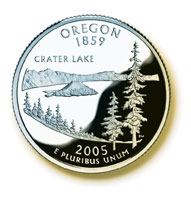
While there was no regular legislative session, Oregon Gov. Ted Kulongoski in May signed an executive order reorganizing the Oregon Economic and Community Development (OECDD) department to separate community development and business development as two distinct functions. The separation sets the stage for a more permanent division of the two functions through statute by the 2009 Legislature. Concurrent with the order was the appointment of Tim McCabe, the governor’s senior economic policy advisor, to the position of director of OECDD. Foremost among his tasks was outreach to rural Oregon; the state recently eliminated its Office of Rural Policy, and some have complained that the state’s traditional agriculture, timber and natural resources industries have received short shrift vs. the high-tech economy.
Looking to 2009, Senate Republicans have introduced a proposal to sell to water-starved states some of the 70 million acre-feet of “wasted water” that pours into the Pacific Ocean from the Columbia River annually. Senate Democrats aim to introduce measures supporting job creation in healthcare and renewable energy, but also to raise the corporate minimum tax “so that big corporations pay their fair share.”
Among the topics addressed in 12 ballot measures on the state’s Nov. 2008 ballot were public-school English immersion and elimination of double taxation on taxes paid to the federal government.

After signing in July a $365-million transportation infrastructure package to fix 411 bridges and also increase rail and aviation infrastructure funding, Gov. Ed Rendell said, “Pennsylvania has more than 6,000 structurally deficient bridges – the most of any state and the price tag to fix all of those bridges is in excess of $11 billion. I look forward to the legislature revisiting the transportation funding issue in the fall and considering the $12.8 billion bid we have received for the lease of the Pennsylvania Turnpike.”
In September, his tone was even more urgent in calling for lawmakers to pass a new energy policy, as electricity rate caps expire beginning in 2010. He warned that consumers and employers will face power cost increases of between 30 percent and 60 percent. Expressing widespread frustration with inaction, Rendell said, “The day is soon coming where a rate cap extension will become the most sensible option.”
In a move pleasing to residents and businesses alike, Rendell signed into law a new set of tax collections system reforms designed to provide better standardization, coordination and accountability at the local level.
New biofuels development and incentive laws could add as much as 1 billion gallons of biofuels to the state’s fuel supplies. Pennsylvania will invest $5.3 million in its in-state biodiesel producers annually through June 30, 2011. These companies will be able to take advantage of a 75 cents-per-gallon subsidy that will be capped at $1.9 million per year per producer.
The Keystone Opportunity Zone, Keystone Opportunity Expansion Zone and Keystone Opportunity Improvement Zone Act provides for extensions for unoccupied parcels; for 15 additional keystone opportunity expansion zones of between 10 and 350 acres; for substitution of parcels outside a subzone and for payments.
A measure calling for tighter reporting, incentives standards, clawback and disclosure requirements by the Department of Community and Economic Development has been with the Commerce Committee since February 2007. Similar measures calling for tighter oversight of job quality, wages and training standards for subsidy recipients also have been in committee since summer 2007.

The “Economic Growth and Fairness Act of 2008” went into committee in March, and has yet to emerge. The act, strenuously opposed by Senate Republicans, would add 28 services previously exempt from the sales tax to the taxable list; cap the historic tax credit program at $40 million; and boost the state income tax rate from 25 percent to 27.5 percent of the taxpayer’s federal income tax liability.
A new law requires businesses receiving tax credits or other financial incentives to file more detailed reports proving they are keeping their job-creation promises. A bill proposed by the Rhode Island EDC would create a $20-million Growth Capital Guarantee Program that would help firms pay for assets not related to real estate, machinery and equipment, but instead working capital and intangibles, “such as patents, proprietary processes, software, systems, trademarks, copyrights, and licenses.” It was referred to committee in March and did not emerge.
Gov. Donald Carcieri in June vetoed legislation designed to encourage renewable energy project development, drawing sharp rebukes from Senate and House leaders. That same month, a measure limiting the use of eminent domain powers by government for purely economic development purposes was signed into law.
A ballot measure in November will ask voters to approve a $2.5-million bond for farmland preservation.

According to a summary by the South Carolina Economic Developers’ Association, the following conditions apply as of June 12, 2008, as a result of a new measure that became law without the signature of Gov. Mark Sanford:
Manufacturers not under fee-in-lieu agreements are not required to pay property taxes on machinery and equipment located in a facility which has not been operational for the past fiscal year. LLCs now qualify for a corporate headquarters credit. The requirements for corporate headquarters have been relaxed; the minimum 75 new corporate headquarters jobs must now earn twice the state per capita income (up from 1.5 times) but the remaining South Carolina employees are no longer required to earn twice the state’s per capita. Qualified Service Related facilities (QSRF) are now eligible to use job development credits to pay for employee relocation expenses. QSRFs now have five years to meet their minimum employee total without regard to monthly or other averaging.
Several amendments were made to the Utility Tax Credit statute: County-owned office buildings or industrial parks must be used exclusively for economic development; the statute further clarifies that counties may sell all or a portion of industrial parks; expenditures for wastewater and hydrogen now qualify; due diligence expenditures, including environmental, made by a county before acquiring land for an industrial park now qualify.
Counties may consent to the inclusion of corporate aircraft in a fee-in-lieu. The process of county consent to the assignment of a fee-in-lieu (e.g., when a plant is sold) is greatly simplified and clarified. Warehouses not in a fee-in-lieu which are owned by a manufacturer are taxed at 6 percent (not 10.5 percent) ? this section has a delayed effective date. The Textile Community Revitalization Act, which provides income or property tax incentives for the redevelopment of closed textile mills, is rewritten, and allows for an income/license tax credit equal to 25 percent of eligible rehab expenses or a property tax credit equal to 25 percent of eligible rehab expenses multiplied by the local tax ratio. A partial tax exemption is provided for large motorsports entertainment complexes (Darlington Motor Speedway’s expansion). The Film Commission is transferred from the Dept. of Commerce to Parks, Recreation and Tourism.
Separately, the state’s deal closing fund, which receive $7 million in 2007, did not receive an allocation. Also, the state’s Center for Accelerated Technology Training received $3 million instead of the requested $6 million, though provisions were inserted to help facilitate funding requests on a case-by-case basis.

Signed into law was a measure to provide tax incentives for wind energy facilities and energy transmission equipment. A related measure tabled until the 2009 session was a broader renewable energy property tax incentive program, though Gov. Mike Rounds did sign into law an act to revise the tax credit for certain renewable resource energy systems and another act to provide for a 2-cent per gallon tax break for fuel blended with biodiesel.
Separately, state legislators revised their appropriation to $5.8 million for a new dairy manufacturing plant at South Dakota State University in Brookings. And they revised the state’s uniform commercial code.

Of the 23 bills supported by the Tennessee Chamber of Commerce and Industry during the 2007-08 session, 16 were passed. Of the 50 bills opposed, 43 failed, “four passed after being amended to make them business neutral and three were sent to summer study committees,” said the Chamber’s summary. “Or to put it very simply, no anti-business, anti-jobs or anti-growth bills became law.”
Bradley Jackson, vice president of government affairs for the Tennessee Chamber of Commerce and Industry, says the 2007 incentives restructuring was followed in 2008 by some detail work. He also says the state remains one of the few states that have not passed a minimum wage. “Other states have passed raids on unemployment insurance trust funds, and we have fought that off.” Similarly, after worker’s comp reforms in 2004, the Chamber has successfully fought attempts to make further changes.
Among incentives updates, the state Dept. of Economic and Community Development (ECD) “may extend, for a reasonable period not to exceed two years, the period during which a data center must invest $250 million in order to qualify for certain tax incentives.” Similarly, a prospective taxpayer making an investment of $1 billion or more now has an additional four years within which to make that investment in order to qualify for the state’s “super” job tax credit, and integrated suppliers that are part of that billion-dollar investment qualify for an enhanced job tax credit. Additional time of three to five years is now also available to companies investing in tier-two or tier-three distressed counties.
Another section of the same measure states that “taxpayers moving tangible personal property into Tennessee in conjunction with establishing a qualified headquarters facility are exempt from the sales and use tax that arises as a result of moving such property into the state, provided that the property was previously used in the operation of the taxpayer’s business.” That same law allows a taxpayer, with ECD approval, “to carry net operating losses forward beyond the initial 15-year authorized period, provided that such an extension is determined to be in the best interests of the state.”
The state’s jobs tax credit program has moved its sunset date from Jan. 2011 to Jan. 2016.
Finally, a section of the law creates two tax credits for manufacturers that make a capital investment of over $250 million in constructing, expanding, or remodeling a facility that is engaged in manufacturing a product that is necessary for the production of green energy.
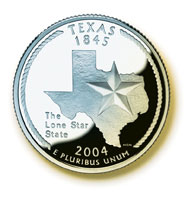
While there was no regularly scheduled 2008 session in Texas, some residual news from the 2007 session is worth revisiting. According to an updated primer from the Texas Economic Development Council, as of December 2007, 556 Texas cities have adopted the economic development sales tax. Carlton Schwab, TEDC president and CEO, calls the 20-year-old workhorse sales tax “always one of our top three priorities.”
In 2007, the statute’s list of project types eligible for assistance from such sales taxes was expanded to include light rail, commuter rail, or motor buses; and hangars, airport maintenance and repair facilities, air cargo facilities and related infrastructure located on or adjacent to an airport facility. Certain airport facilities are also allowable projects provided that the municipality enters into a development agreement. And the public hearing requirement was waived for certain qualifying primary job projects in communities with under 20,000 in population.
TEDC’s outlook for the 2009 legislative year includes maintaining a focus on the sales tax as a tool for primary job creation; continuing to support the deal-closing Texas Enterprise Fund and Texas Emerging Technology Fund; increasing funds for the Skills Development Fund from the $11 million allocated in 2007; allocating funds for a new Texas Rural Development Fund; pushing for the state’s economic development act to extend property tax breaks to data center projects; and backing more financial incentives for sustainable industries.

Michael Sullivan, with the Governor’s Office of Economic Development (GOED), says the year’s highlights included a measure establishing of an administration of Business Resource Centers and creating a partnership between GOED and State institutions of higher education to coordinated economic development activities in different geographic areas of the state. The ceiling on aggregate contingent tax credits that may be issued to Venture Capital Funds from the Utah Fund of Funds has been raised from $100 million to $300 million.
The state’s incentives statute was revised to replace economic incentives previously issued in the form of a rebate with an incentive in the form of a tax credit. GOED also was authorized to purchase contracts for the sale of land and issuance of general obligation bonds to fund certain purchases that will allow for development of the new St. George regional airport.
A unique new law requires the Dept. of Health, Insurance Dept. and GOED to work with the legislature to develop a strategic plan for health system reform. GOED will serve as the coordinating entity and is charged to have a plan by November 2008. GOED is also the overseer of a newly created Office of Rural Development.

Act 182 directs the Commission on the Future of Economic Development to establish a uniform set of goals and benchmarks for gauging economic development in the state, and to issue a report on the existing and potential labor force and business opportunities in the environmental technology sector.
On and after July 1, 2010, a permit from the state agency of natural resources shall be required for a new or increased groundwater withdrawal of more than 57,600 gallons for commercial or industrial use at a single tract of land or place of business.
Workers’ comp law was reformed by improving anti-fraud and anti-misclassification laws and procedures, creating deductible and first-aid only claim procedures and deductible workers’ compensation coverage, changing how average weekly wage is calculated and the time before temporary total benefits are increased by cost of living, improving and encouraging workplace safety programs, and creating a mediation program for resolving disputes.
A far-ranging greenhouse gas act includes measures to incentivize carbon sequestration, develop a state greenhouse gas inventory, increase recycling, integrate rail into the transportation network, authorize municipalities to create green development incentives, encourage combined heat and power facilities, and coordinate all transportation options with the goal of greenhouse gas reduction. In addition, up to $10 million in Vermont Employment Growth Incentive (VEGI) investments have been targeted for green-job projects, and $1.25 million in funding will support up to $18 million in business loans as part of the Economic Recovery and Opportunity Program launched July 1. Other parts of Gov. Jim Douglas’s “Economic Growth Initiative” were blocked by opponents, and became rallying cries in the state’s gubernatorial race this fall.

Unsolved transportation funding and planning issues continue to nettle the state despite a special midsummer session on the topic. However, Gov. Tim Kaine has said Virginia will pony up its $50-million annual share in a new 10-year federal funding program for the D.C. area’s Metro transit system, passed by Congress in early October. The legislative work to fund that share will take place in 2009.
Progress was made in work-force development as responsibility for its overall management was shifted to the Virginia Community College System, whose chancellor now will sit on the Virginia Economic Development Partnership Authority’s Board of Directors.
Among amendments by Gov. Tim Kaine to the budget were $4 million in incentives for nonprofit research center SRI International. In addition, at another special session in April, a $1.5-billion bond package for higher education projects was approved, including $44.8 million for a new biotech facility at James Madison University.

The Washington Economic Development Association said its top priority was to establish “a comprehensive economic development infrastructure funding policy,” building on the state’s successful Community Economic Revitalization Board (CERB) funding program by dedicating more funds to rural projects, large projects and urban projects.
Several bills seeking to fund and plan infrastructure died in committee. Two measures involving the Workforce Training and Education Coordinating Board require it to allocate grants to support Industry Skill Panels and to offer pilot projects providing employer workplace-based educational programs with distance learning components. In addition, the 2008 Supplemental Operating budget included $3 million for aerospace apprenticeships.
The new Washington Manufacturing Innovation and Modernization Extension Service Program allows small manufacturers, industry associations or cluster associations to receive vouchers of up to $200,000 per year to cover the costs of manufacturing extension services.
A new law effective July 1, 2008, creates a sales and use tax exemption for business headquarters construction projects that meet the following criteria: are located in a Community Empowerment Zone; are not a manufacturing, warehousing or wholesaling business; involve construction investment of at least $30 million; and house at least 300 full time employees earning at least the average annual state wage.

Regular and extended sessions were followed by two special sessions, finally ending in June. In the regular session, a measure became law that authorizes property owners to apply to the West Virginia Development Office to have their brownfield sites designated as brownfield economic development districts, which will allow for consideration for site assessment loans and certain remediation loans from the Brownfields Revolving Fund. Under another new law, certain brownfield projects may qualify to be pursued under the Municipal Economic Opportunity Development District Act, “provided during the first 48 months following the creation of the district results in capital investment of more than $50 million and that the proposed remediation expenditures to be financed by bonds do not constitute more than 25 percent of the total cost. These bonds may not exceed a repayment schedule of 20 years.
As of July 1, 2008, each of the state’s six community and technical colleges has an independent governing board and is removed administratively from its sponsoring institution.
A new transportation law authorizes private entities to acquire, construct or improve one or more transportation facilities, establishing ground rules for public-private partnership projects.
SB 680 increases the percentage of a business tax that may be reduced by application of the Manufacturing Investment Tax Credit from 50 percent to 60 percent, effective for tax years beginning January 1, 2009. The bill also relates to the combined reporting of business taxes, and various tax credits against those taxes, as well as provides a reduction in the corporate net income tax.
Small businesses that didn’t qualify under the Economic Opportunity Tax Credit Act for 2002 because they didn’t create at least 10 new jobs, but met the other requirements of creating full-time permanent jobs with an annual salary of at least $32,000 plus benefits, will now qualify. The credit allowed is $3,000 per year, per new job created and filled, for five consecutive years.

A new law directs the legislative audit bureau to audit the economic development programs of multiple agencies, including the state department of commerce, the University of Wisconsin system, DOT and the state technical college system. Among the changes the law calls for: elimination of unfunded, inactive or duplicative programs; consolidation of minority business and gaming grant and loan programs; annual program assessment reports; setting of goals and policies to improve program transparency and accountability. A separate measure that failed would have consolidated five economic development zone programs.
Another new law provides that a TIF district’s project costs may be expended in territory that is located within a one-half-mile radius of the tax incremental district’s boundaries if the territory is within the creating city’s or village’s boundaries. Among many changes brought about by a new tax reform measure were the following: modification of the calculation of the enterprise zones tax credit based on jobs and elimination of the part of the credit based on payroll and property; an increase in credits available under the state’s angel and early-stage seed investment programs; creation of income and franchise tax credits for investments in healthcare medical records hardware and software, dairy manufacturing modernization or expansion and biodiesel production (10 cents per gallon).
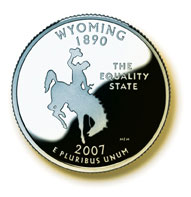
In signing off on a final budget in March, Gov. Dave Freudenthal vetoed funding for additional offices for the Wyoming Business Council, the state’s lead economic development agency.
State leaders created a film industry financial incentive program. A new law established the Community College Planning Task Force, which is charged with establishing a statewide community college system, developing capital construction requests and distributing funds to Wyoming’s seven community colleges.
A new act authorizes the University of Wyoming as an entity that can receive state loan and investment board loans, whose total amount has been increased from $30 million to $60 million. A new law provides amendments to sales and use tax laws to conform with provisions of the streamlined sales and use tax agreement.
A new law establishes a comprehensive regulatory framework for carbon capture and sequestration, including recognition that surface owners control the underground pore spaces where carbon dioxide could be stored or sequestered, and the granting of authority to the Wyoming Department of Environmental Quality to regulate the long-term storage of carbon dioxide.

Gov. Aníbal Acevedo-Vilá signed into law in June a new economic and tax incentives program which sets a fixed corporate tax rate of four percent, lower than the existing rate for many companies, with zero and one percent rates for pioneer companies investing in and developing new technologies in Puerto Rico. Also under the new law, businesses would receive tax credits of 50 percent for R&D, clinical trials and for using renewable energy, among other benefits.
The island also has revamped its permitting process, opening a new Technical Evaluation Office and moving to an online system (www.permisos.gobierno.pr) that allows better tracking, reliability, communication and speed. As of April 1, 2008, requests for construction licensing permits in 15 of the Island’s 78 municipalities now will be completed online. The program’s next phase calls for extending the re-engineered permitting process to every municipality on the island.
Site Selection Online – The magazine of Corporate Real Estate Strategy and Area Economic Development.
©2008 Conway Data, Inc. All rights reserved. SiteNet data is from many sources and not warranted to be accurate or current.